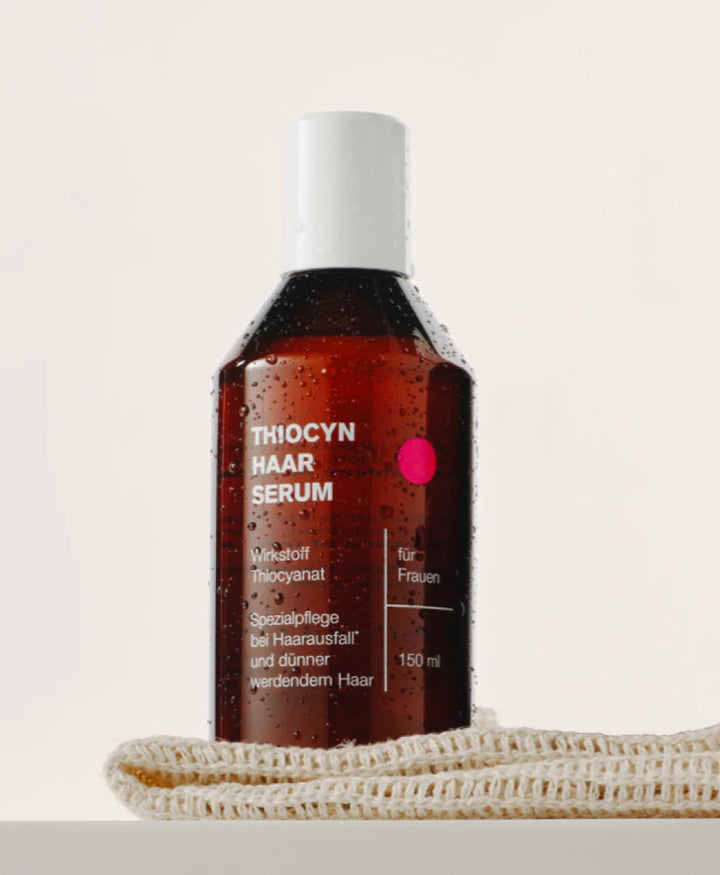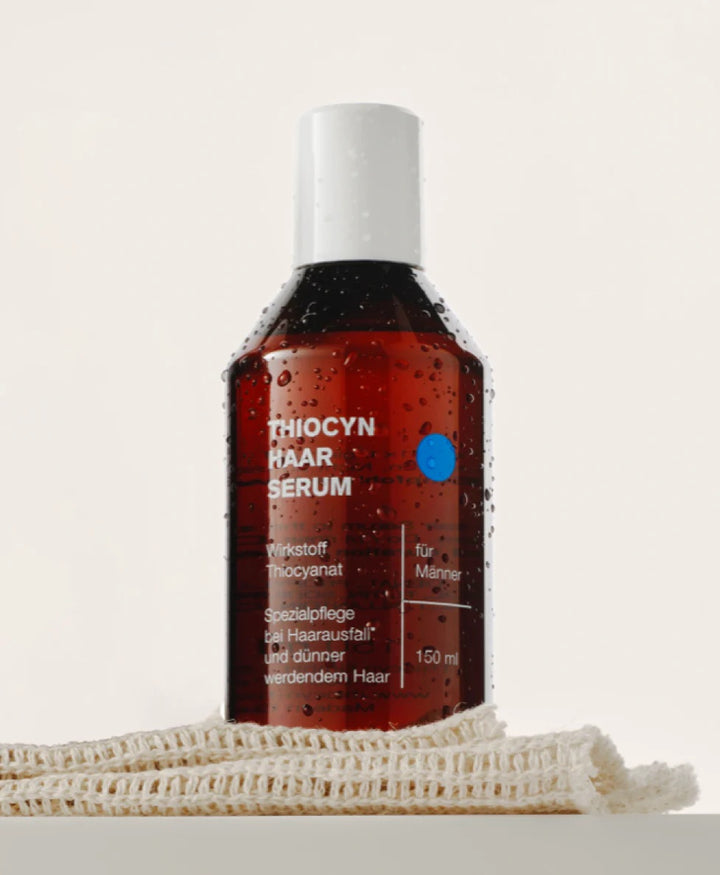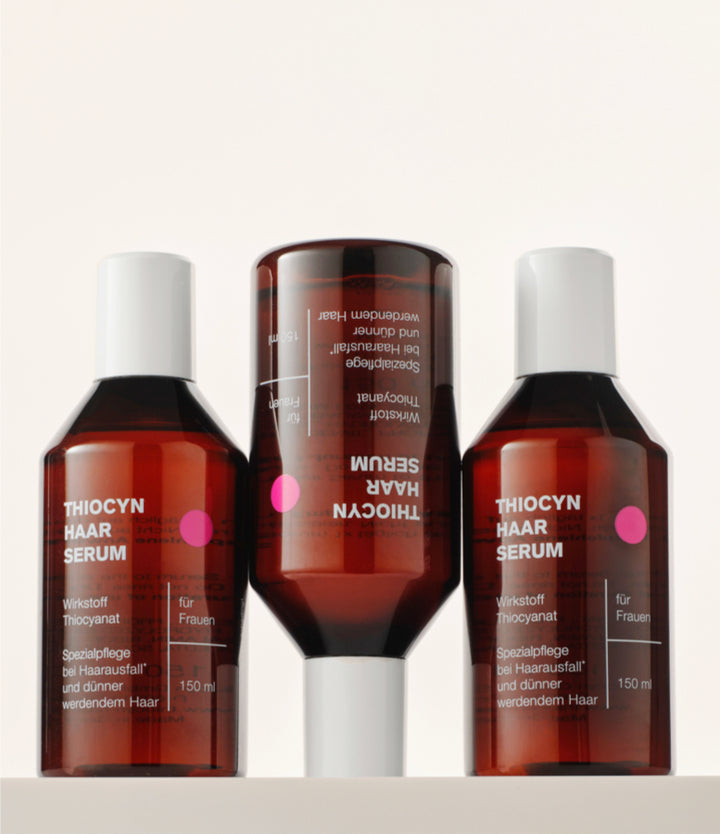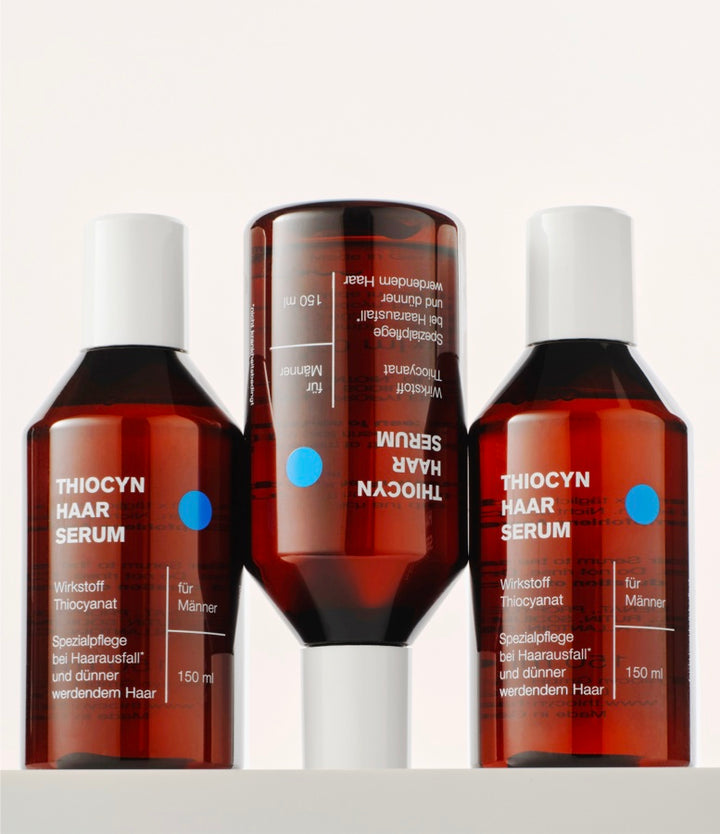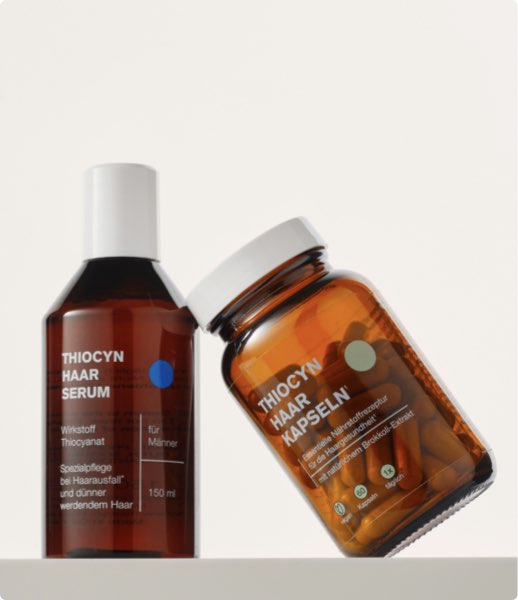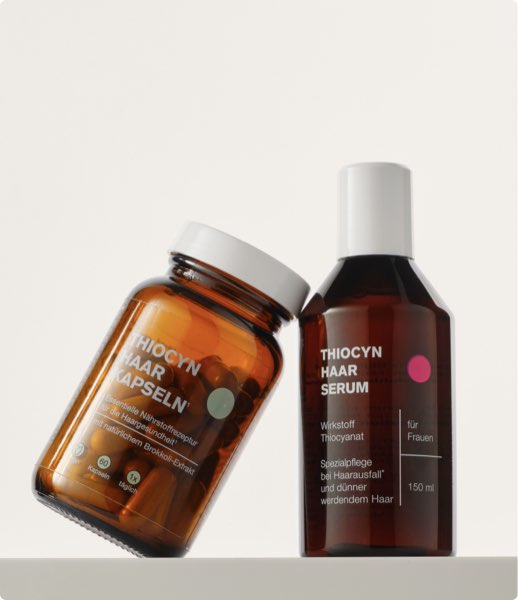| 04. July 2023
Hair transplant

Which method is the best?
- Hair transplantation for hair loss – the perfect therapy for many men.
- The most important condition: enough hair that can be transplanted.
- Which method is best for each individual?
- The minimally invasive FUE method does not leave any visible scars.
- More and more women want to thicken their hair.
- Thiocyanate helps in the regeneration of transplanted hair.
"Yes, it's true, I had a hair transplant. And I think the result is pretty cool." Ever since football coach Jürgen Klopp made this statement, more and more men are considering hair transplants. Today, the debate is no longer about "if," but rather "how." Which hair transplant method is best?
Hair transplantation for hair loss
Over the past 10 years, hair transplantation as a therapeutic treatment for hair loss has become as straightforward as a visit to the dentist, only it takes considerably longer. Depending on the size of the area, operations lasting several hours are common. After local anesthesia of the scalp, the hair is transplanted from the back to the front. More precisely, the patient's own hair follicles are removed and redistributed to thicken thinning or bald areas of the head. Precise planning, precision in implementation, and patient patience are crucial for achieving lasting results .
Three questions before hair transplantation
Before considering a hair transplant, men have suffered from hair loss for a long time and tried a variety of treatments. Now they no longer want to wait and examine their receding hairlines and tonsures in the mirror—both signs of hereditary hair loss . Hair transplantation now appears to them to be the only effective way to restore a satisfactory hair appearance. But first, a few questions must be answered.
Which doctor can I trust?
A recommended first step is research online. Many websites provide detailed information about methods and success rates. Video clips, testimonials, and reviews build trust. The doctor's experience and the clinic's reputation, as well as the patient's financial resources, are important considerations. Those seeking to minimize costs should contact experts in Turkey. Those seeking quality Made in Germany should turn to hair surgeons in Germany.
Who performs the hair transplant?
German hair transplant clinics employ hair transplant specialists from a variety of disciplines. An important quality indicator is certainly the individual consultation with the surgeon, photographic evidence of their work, and, last but not least, testimonials from satisfied customers.
Hair transplant costs
The average cost of a hair transplant in Germany in 2018 for 800 grafts was €2,632 (Turkey: €1,512). A hair transplant with 1,600 grafts cost €5,264 (Turkey: €3,024). One graft, or one follicular unit, corresponds to one, two, or three hairs with a hair root.
Am I suitable for a hair transplant?
Prior to a hair transplant, the expert teams conduct detailed consultations with patients. Suitable individuals are those who currently and in the future have sufficient hair follicles, mostly at the back of the head, that are resistant to the androgen DHT. The donor hair must be of the right size, structure, and color, and contain a sufficient number of follicular units so that the hair density at the back of the head is not noticeable after the transplant.
Which method is best for me?
Hair follicles are not evenly distributed across the scalp, but naturally grow in small groups, more precisely in follicular units. These units consist of one, two, or three, sometimes even four or five directly adjacent hair follicles. Hair surgeons call them grafts. 1,000 transplanted grafts correspond to an average of 3,000 hairs. The basis for a successful hair transplant is a sufficient number of hair follicle units, or grafts, at the back of the head, which are then transplanted using an FUT, FUE, or with the aid of a medical robot.
Three methods of hair transplantation, one goal: to obtain vital hair follicles
FUT = Follicular Unit Transplantation
Colloquially known as the FUT strip method, the procedure begins with the removal of hair from the hairline, usually at the back of the head, using a scalpel. Experienced surgeons can complete the removal and suture the wound in five minutes. The hair strip is dissected into its natural follicular units under a high-resolution microscope and implanted by the attending physician into the prepared areas.
FUE = Follicular Unit Extraction
The minimally invasive FUE method is enjoying growing popularity. The surgeon uses not scalpels or punches, but the finest extraction needles. The precious hair follicles are removed individually and inserted into tiny openings. The major advantage of the FUE method is that it avoids large wounds, thus avoiding pain. Experienced teams can implant up to 5,000 grafts, or hair follicles with their short hair shafts, in eight hours. Around 100 hair follicles are then processed per square centimeter. The results are impressive: no visible scars, a smooth healing process, maximum density, and a very natural hairline.
Transplantation robot
The advantage of using high-tech technology lies in the avoidance of scarring, especially in the precise extraction of the grafts. The computer-controlled system performs a quality analysis of the back of the head using a scan. What's special about it is that the growth direction of each individual hair is precisely identified. Damage during transplantation is largely avoided. After identifying the most vital hair follicles, the human element comes back into play: the surgeon takes over the implantation.
Mostly misunderstood quality factor
Experts point out that the quality of a hair transplant is primarily determined by the placement of the incisions in the target area of the head, as well as by the subsequent placement of the hair roots, hair density, growth direction, and the most natural hair appearance possible. The method used to obtain the hair for the transplant is ultimately not the highest priority. Nevertheless, FUE (Follicular Unit Extraction) is gaining importance.
Good method for hair regeneration
Due to the inevitable shock of the operation, the transplanted hair follicles shed hair two to five weeks after the transplant. A resting phase of three to six months follows. After that, the hair follicles begin producing hair again. To support the hair follicles in their work, the use of the active ingredient is recommended. Thiocyanate , which naturally supports cell metabolism at the hair root, where hair growth occurs, and helps to balance the hair cycle. The patented thiocyanate active formula in Thiocyn Hair Serum is dermatologically very well tolerated ³ and easy to use.
READ BY 23,000 PEOPLE
Join 23,000 others and find out how to improve your hair health with great offers and discounts as well as helpful advice
